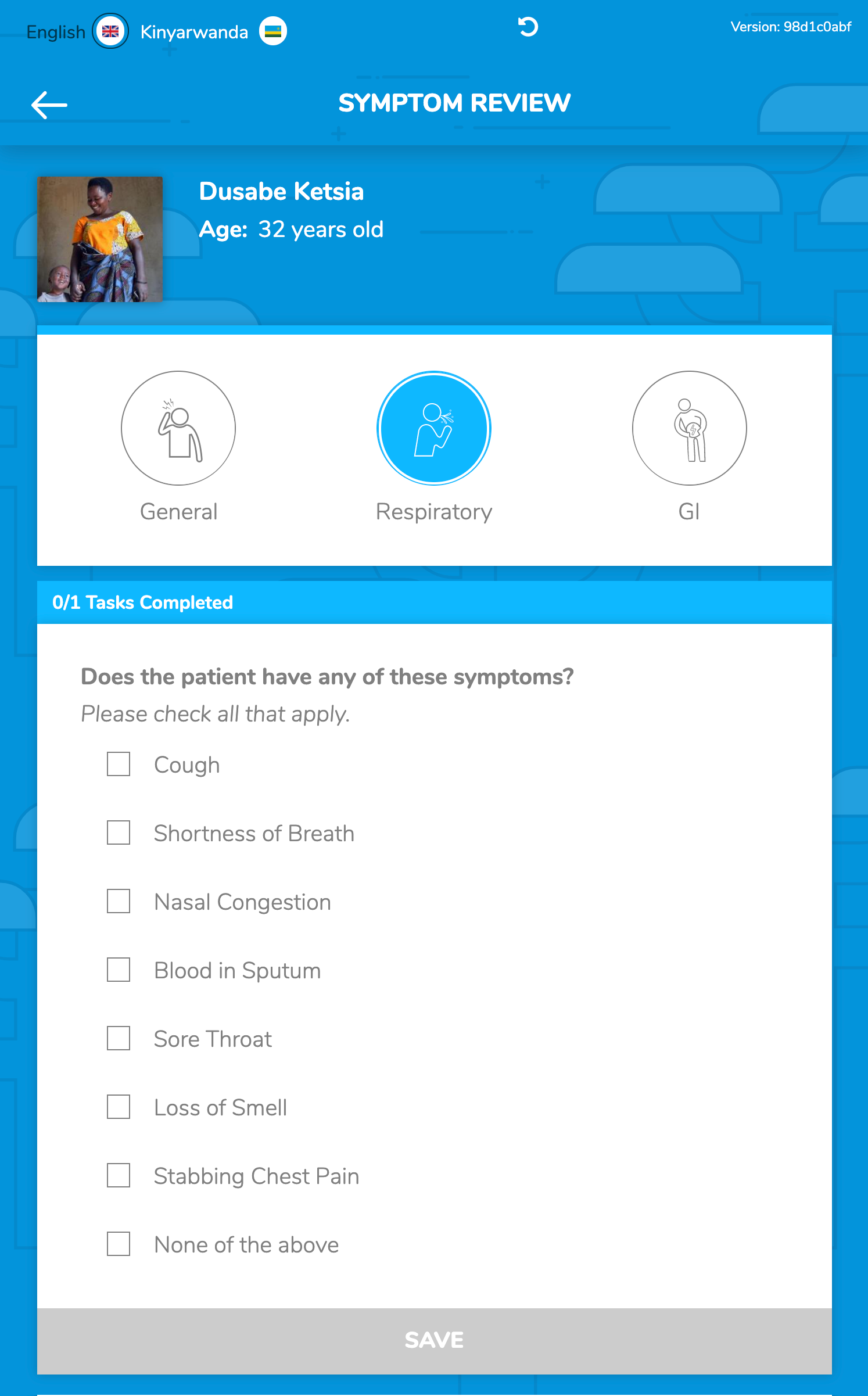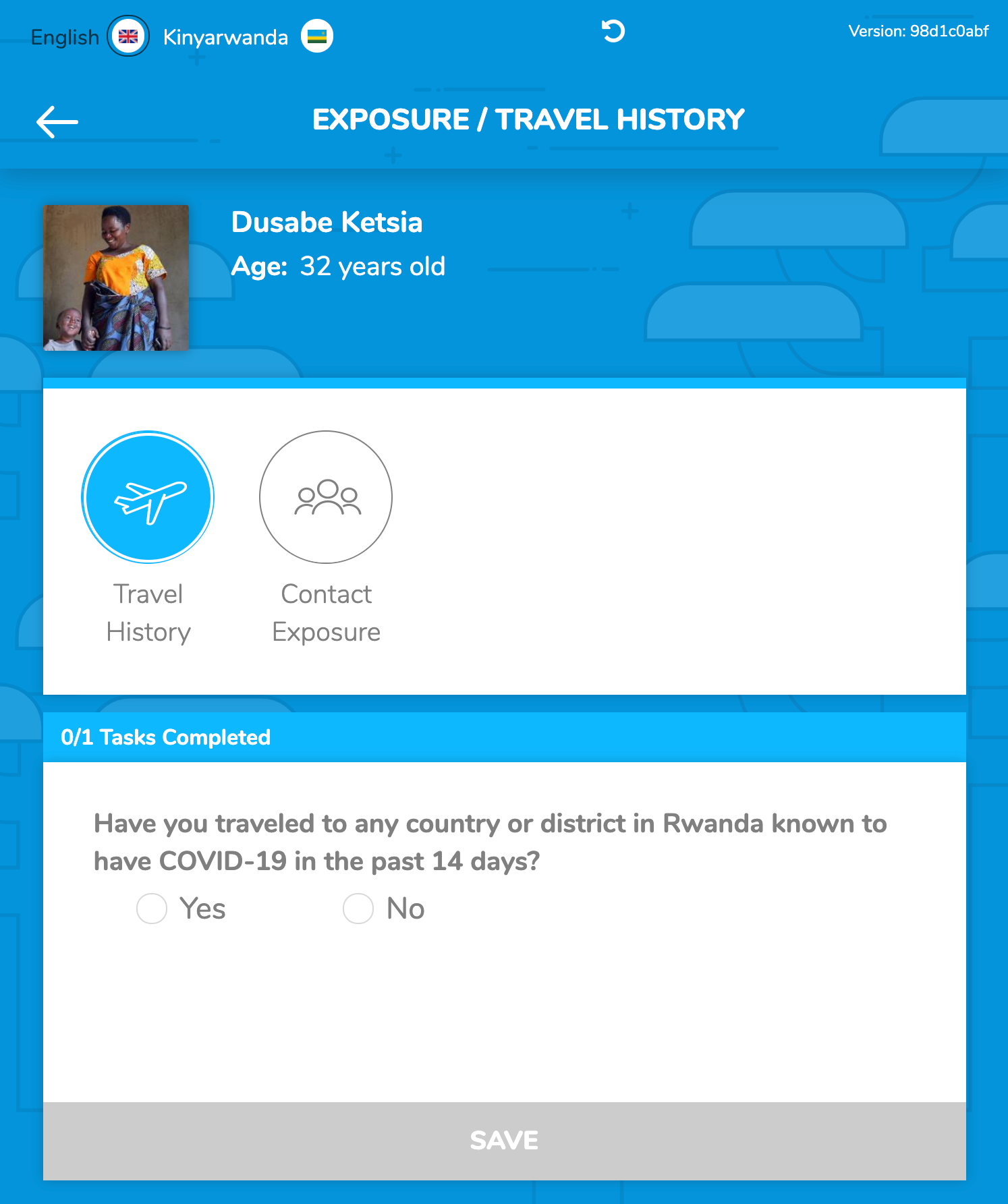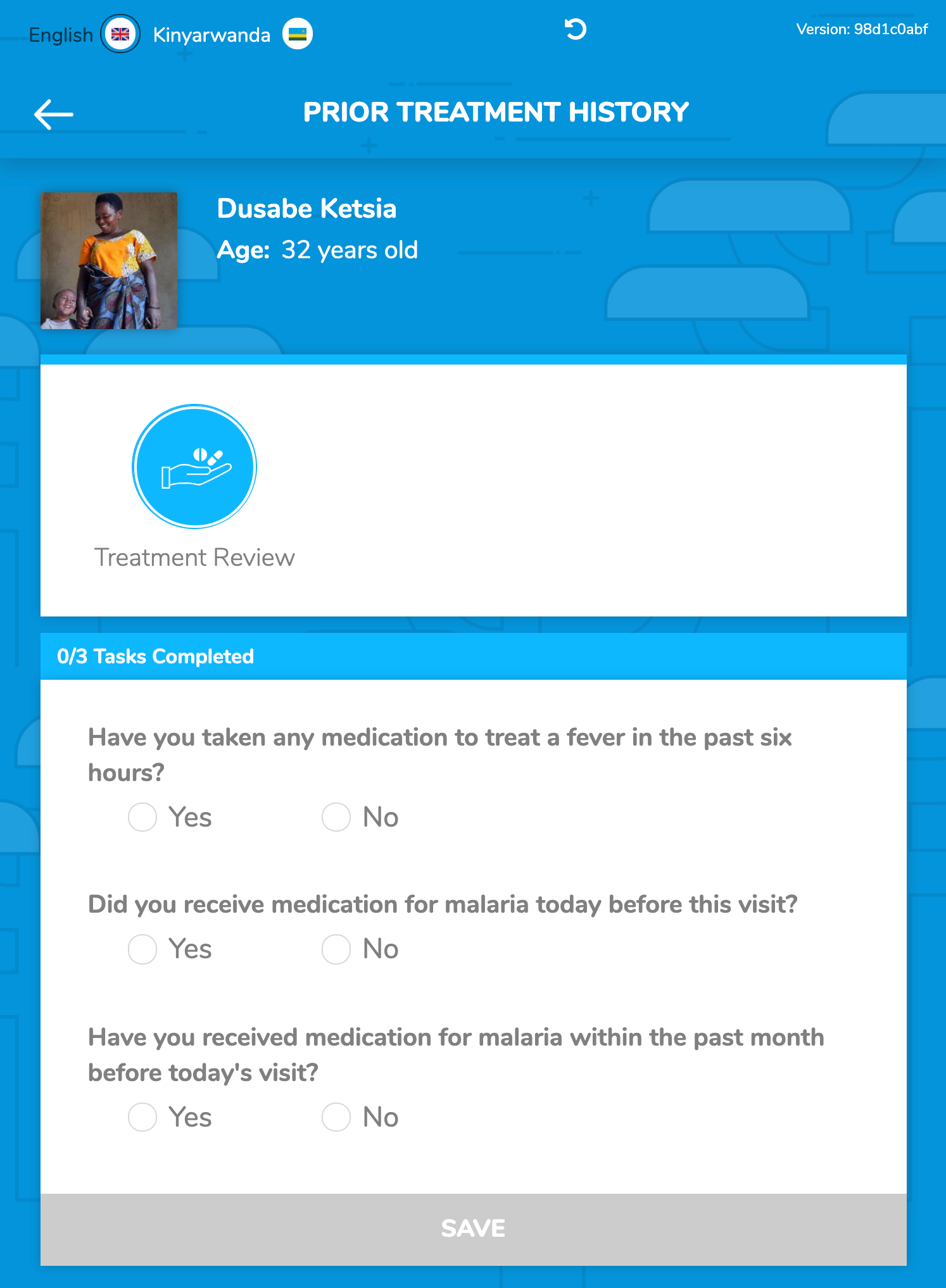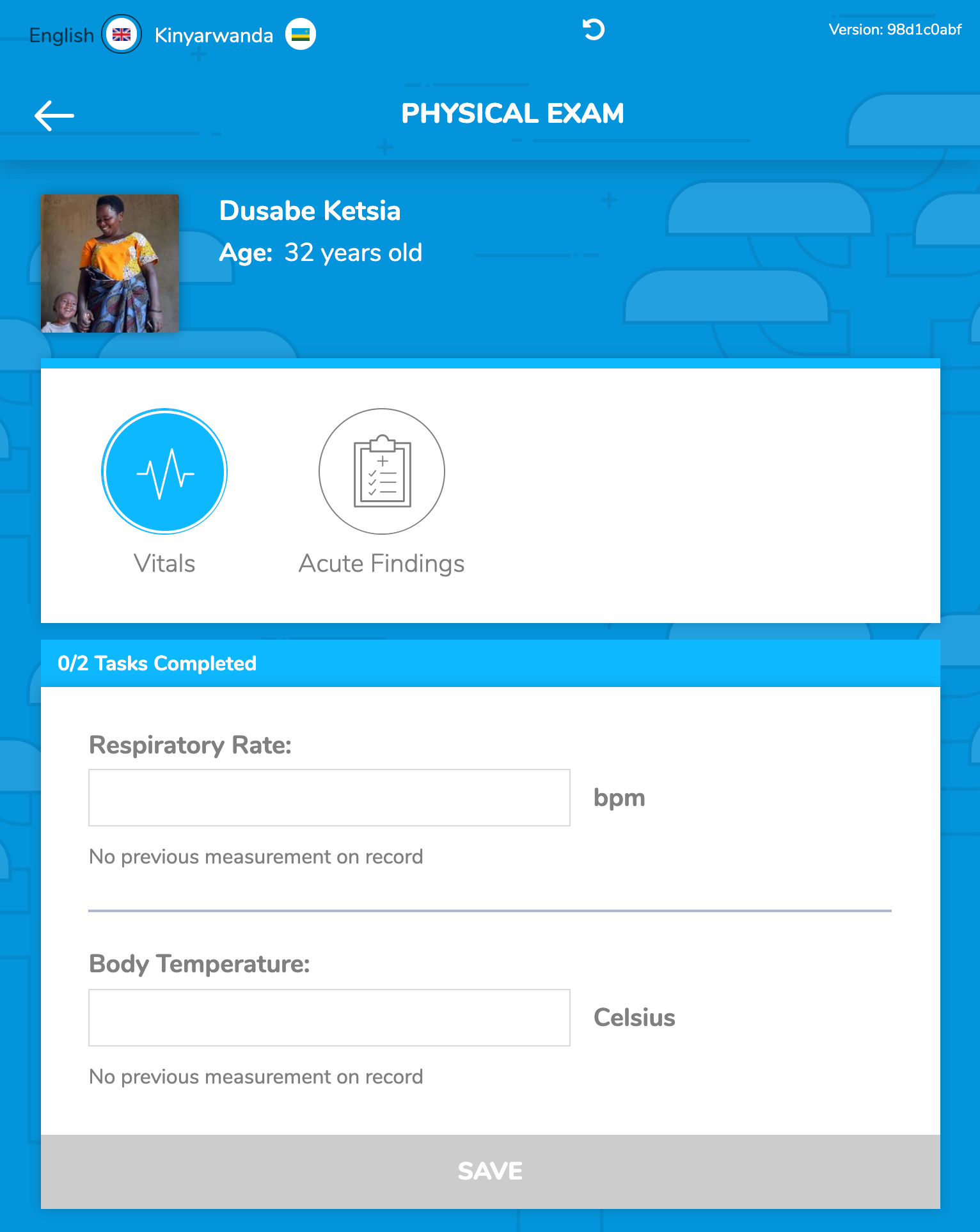Established to support CHWs’ ability to continue their work despite COVID-19. Allows CHWs to screen for COVID-19, identify, isolate and refer suspects. If COVID-19 not suspected, allows CHWs to evaluate for, diagnose, treat, and refer if needed cases of malaria, diarrhea, and pneumonia. Decision matrices tailored to the needs of all age groups and subpopulations (ex. pregnant women). This workflow supports traditional U5 ICCM as well as all age groups
There are four main activities in the Acute Illness module: Symptom Review, Exposure/Travel History, Prior Treatment History, and Physical Exam.
Symptom Review allows a CHW to do an inventory of General, Respiratory, and Gastrointestinal symptoms to inform their diagnosis.

Exposure/Travel History allows E-Heza to streamline a diagnosis for a potential COVID-19 patient. If a patient has been in an area that is known to be high-risk, E-Heza then directs a CHW to follow local COVID protocols, self-isolate patients (when available), or direct them to a health center for further testing or treatment.

Prior Treatment History determines whether a patient is currently taking treatment for fever or Malaria - and if this treatment is helping. This further informs a diagnosis and next steps later in the flow.

Physical Exam collects information on vitals (e.g. temperature and heart rate) and any acute findings (e.g. jaundice or stridor)

The next steps are outlined depending on the diagnosis and severity of the illness. The next steps will outline basic medication distribution, health guidance/education, and referral to a health center (when necessary).
Below you can see an example of a CHW using the Acute Illness module to diagnose a COVID-19 patient.
Last Modified: 1 January 0001
